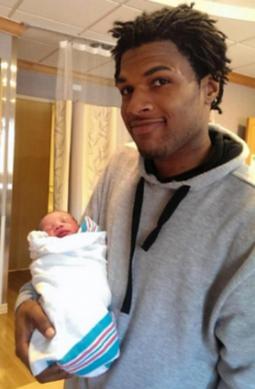
Walmart Inc. is an American multinational retail corporation that operates a chain of hypermarkets, discount department stores, and grocery stores from the United States, headquartered in Bentonville, Arkansas. The company was founded by Sam Walton in nearby Rogers, Arkansas in 1962 and incorporated under Delaware General Corporation Law on October 31, 1969. It also owns and operates Sam's Club retail warehouses.

Airsoft guns are replica toy guns used in airsoft sports. They are a special type of low-power smoothbore air guns designed to shoot non-metallic spherical projectiles often colloquially referred to as "BBs", which are typically made of plastic or biodegradable resin materials. Airsoft gun powerplants are designed to have low muzzle energy ratings and the pellets have significantly less penetrative and stopping powers than conventional airguns, and are generally safe for competitive sporting and recreational purposes if proper protective gear is worn.

The history of Walmart, an American discount department store chain, began in 1950 when businessman Sam Walton purchased a store from Luther E. Harrison in Bentonville, Arkansas, and opened Walton's 5 & 10. The Walmart chain proper was founded in 1962 with a single store in Bentonville, expanding outside Arkansas by 1968 and throughout the rest of the Southern United States by the 1980s, ultimately operating a store in every state of the United States, plus its first stores in Canada, by 1995. The expansion was largely fueled by new store construction, although the chains Mohr-Value and Kuhn's Big K were also acquired. The company introduced its warehouse club chain Sam's Club in 1983 and its first Supercenter stores in 1988. By the second decade of the 21st century, the chain had grown to over 11,000 stores in 27 countries.
On March 7, 2006, Joseph Erin Hamley, an unarmed man, was fatally shot by Arkansas State Trooper Larry P. Norman of West Fork, Arkansas. At 7 a.m. on March 7, 2006, Hamley, who had cerebral palsy, was walking alone on U.S. Route 412, just outside the community of Tontitown along the Benton-Washington county line when several Washington County deputies surrounded him. Four minutes later, before being identified, and while lying on the ground, a shotgun slug fired by Norman, an Arkansas State Trooper breaking police protocol and procedure killed Hamley. The fatal shooting was recorded from multiple vantage points on dashboard cameras of the various police cruisers present. Norman was indicted on and pled guilty to negligent homicide.

Carl Douglas McMillon is an American businessman, and the president and chief executive officer (CEO) of Walmart Inc. He sits on the retailer's board of directors. Having first joined the company as a summer associate in high school, he became the company's fifth CEO in 2014. He previously led the company's Sam's Club division, from 2005 to 2009, and Walmart International, from 2009 to 2013.

On November 22, 2014, Tamir E. Rice, a 12-year-old African-American boy, was killed in Cleveland, Ohio, by Timothy Loehmann, a 26-year-old white police officer. Rice was carrying a replica toy gun; Loehmann shot him almost immediately upon arriving on the scene. Two officers, Loehmann and 46-year-old Frank Garmback, were responding to a police dispatch call regarding a male who had a gun. A caller reported that a male was pointing "a pistol" at random people at the Cudell Recreation Center, a park in the City of Cleveland's Public Works Department. At the beginning of the call and again in the middle, he says of the pistol "it's probably fake." Toward the end of the two-minute call the caller states that "he is probably a juvenile", but neither of these statements were relayed to officers Loehmann and Garmback on the initial dispatch.
The shooting of William L. Chapman II, a black 18-year-old, on April 22, 2015, in Portsmouth, Virginia, when Chapman was shot and killed in a Wal-Mart parking lot by Portsmouth Police Officer Stephen D. Rankin. Rankin had been responding to a report of suspected shoplifting, and engaged in a physical struggle with Chapman, who instigated the altercation, while trying to arrest him. The shooting occurred approximately four years after the death of Kirill Denyakin, who died after being shot by Rankin in 2011.

On July 5, 2016, Alton Sterling, a 37-year-old black man, was shot and killed by two Baton Rouge Police Department officers in Baton Rouge, Louisiana. The officers, who were attempting to control Sterling's arms, shot Sterling while Sterling allegedly reached for the loaded handgun in his pants pocket. Police were responding to a report that Sterling was selling CDs and that he had used a gun to threaten a man outside a convenience store. The owner of the store where the shooting occurred said that Sterling was "not the one causing trouble" during the situation that led to the police being called. The shooting was recorded by multiple bystanders.

On August 4, 2019, 24-year-old Connor Betts shot and killed nine people, including his brother, and wounded 17 others near the entrance of the Ned Peppers Bar in the Oregon District of Dayton, Ohio. Betts was fatally shot by responding police officers 32 seconds after the first shots were fired. A total of 27 people were taken to area hospitals.









